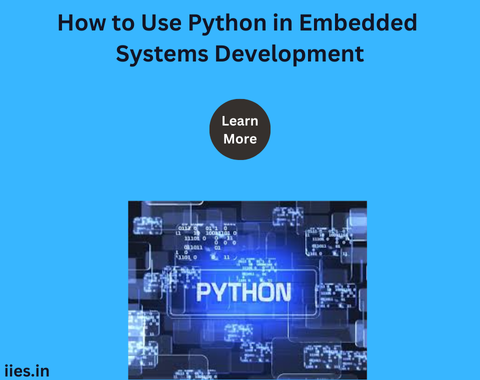
Embedded systems are at the heart of modern electronics, powering everything from household appliances to industrial machines. Traditionally, languages like C and C++ have dominated the embedded systems landscape due to their performance and low-level hardware control. However, Python, a high-level programming language known for its simplicity and readability, is increasingly being adopted in embedded systems development. This article explores how Python can be used in embedded systems and the benefits it offers to developers.
Python is widely recognized for its ease of use, extensive libraries, and active community. While it may not match the raw performance of C or C++, Python offers several advantages that make it a viable option for embedded systems development:
Rapid Prototyping: Python’s simplicity allows developers to quickly prototype and test ideas. This rapid development cycle can significantly reduce time-to-market.
Large Ecosystem: Python’s rich set of libraries, such as NumPy for numerical computations and PySerial for serial communication, can be easily leveraged in embedded systems.
Cross-Platform Compatibility: Python can run on various platforms, including microcontrollers and single-board computers like Raspberry Pi, making it highly versatile.
Ease of Integration: Python can easily interface with C/C++ code, allowing developers to write performance-critical code in a lower-level language while maintaining the flexibility of Python for higher-level tasks.
To use Python in embedded systems, developers typically follow these steps:
Choose the Right Hardware: Python can run on various hardware platforms, but it’s essential to select one that supports Python interpreters. Popular choices include Raspberry Pi, BeagleBone, and ESP8266/ESP32.
Set Up the Development Environment: Install a Python interpreter and necessary libraries on the target hardware. For example, MicroPython is a lean implementation of Python 3 that is optimized for microcontrollers.
Write and Test Code: Develop the embedded application using Python. Start with simple scripts to control hardware components like LEDs or sensors, and gradually move to more complex tasks.
Optimize for Performance: While Python is not as fast as C/C++, it is possible to optimize Python code for better performance. Techniques include using Just-In-Time (JIT) compilers like PyPy or integrating performance-critical sections with C/C++.
Deploy the Application: Once the application is developed and tested, deploy it to the embedded system. Python’s portability makes this process straightforward, allowing the same code to run on different hardware platforms with minimal changes.
Python’s versatility makes it suitable for a wide range of embedded systems applications:
Home Automation: Python can be used to develop smart home devices that control lighting, temperature, and security systems. Libraries like Home Assistant can be integrated with Python scripts to create custom automation solutions.
IoT Devices: Python is commonly used in the Internet of Things (IoT) for developing connected devices. Microcontrollers like ESP8266 running MicroPython can connect to Wi-Fi networks and send data to cloud services.
Data Acquisition Systems: Embedded systems often require real-time data acquisition from sensors. Python, with its extensive libraries, can process and analyze sensor data, making it ideal for developing data acquisition systems.
Robotics: Python is widely used in robotics for tasks like motor control, sensor integration, and communication. Libraries like ROS (Robot Operating System) support Python, allowing developers to create sophisticated robotic systems.
Educational Tools: Python’s simplicity makes it an excellent choice for educational purposes. Platforms like Raspberry Pi are often used in schools and universities to teach students about embedded systems and programming.
While Python offers many benefits for embedded systems development, there are some challenges to consider:
Performance Constraints: Python is an interpreted language and may not offer the same performance as compiled languages like C/C++. For time-critical applications, developers may need to optimize their Python code or use a hybrid approach.
Memory Usage: Embedded systems often have limited memory, and Python’s higher memory consumption can be a concern. It’s crucial to choose hardware with sufficient resources or optimize the Python code to minimize memory usage.
Real-Time Requirements: Embedded systems often require real-time processing, where delays can lead to system failure. Python’s garbage collection and interpreter overhead may not meet strict real-time requirements. In such cases, combining Python with real-time operating systems (RTOS) or using Python for non-critical tasks can be a solution.
Limited Library Support: While Python has a vast ecosystem, not all libraries are optimized for embedded systems. Developers may need to create custom libraries or adapt existing ones for their specific use case.
Python’s adoption in embedded systems development is on the rise, thanks to its ease of use, flexibility, and extensive library support. While it may not replace traditional languages like C or C++ for performance-critical applications, Python provides a powerful tool for rapid prototyping, IoT development, and educational purposes. By carefully selecting hardware, optimizing code, and leveraging Python’s strengths, developers can create efficient and scalable embedded systems. As the embedded systems landscape evolves, Python is poised to play an increasingly important role, bridging the gap between high-level development and low-level hardware control.
Indian Institute of Embedded Systems – IIES